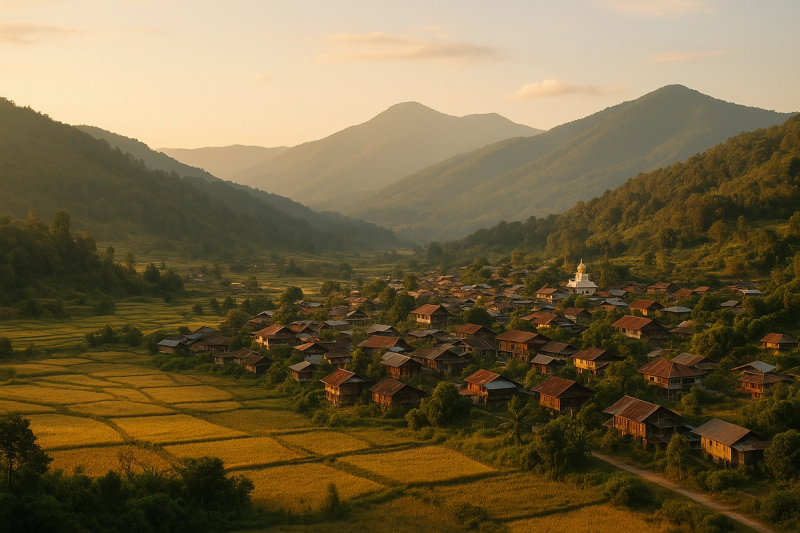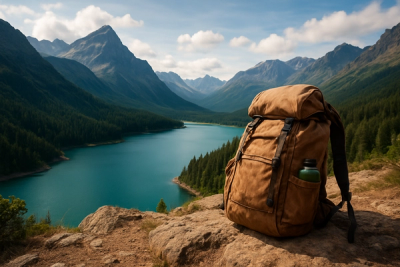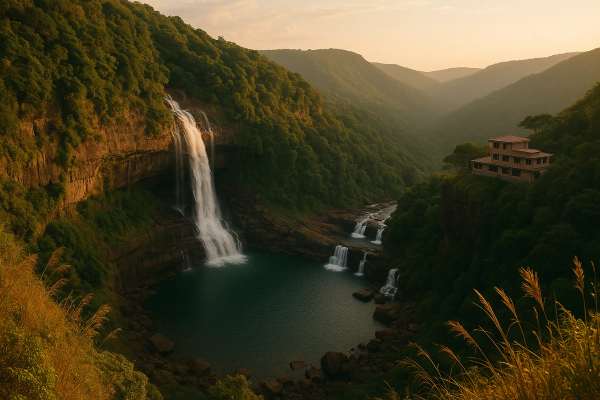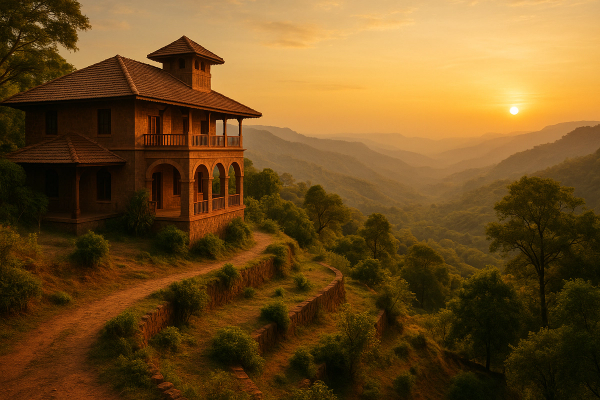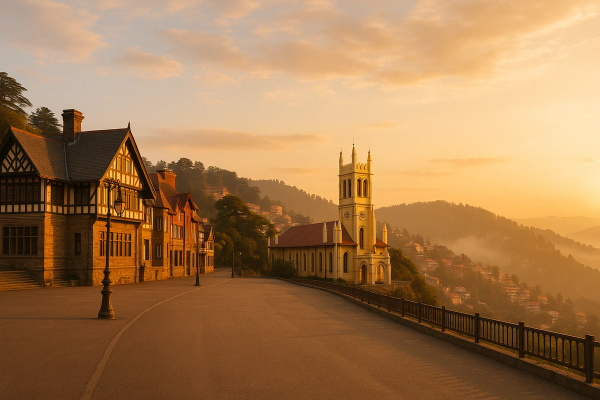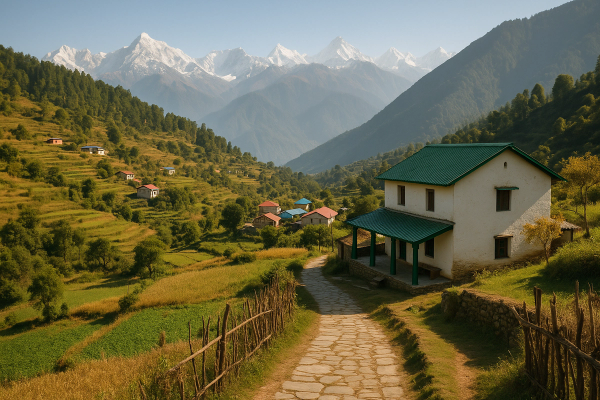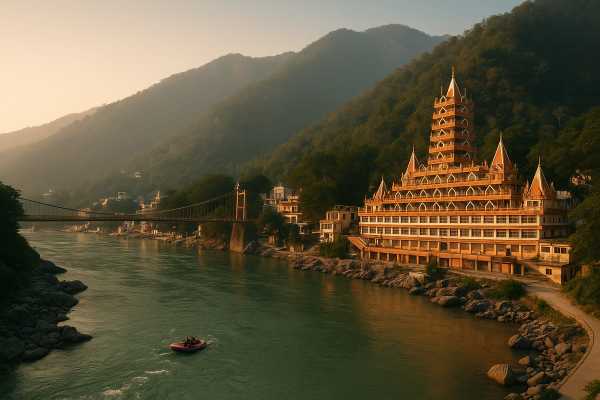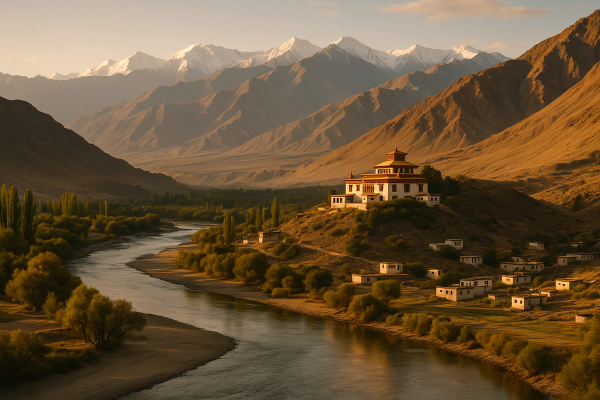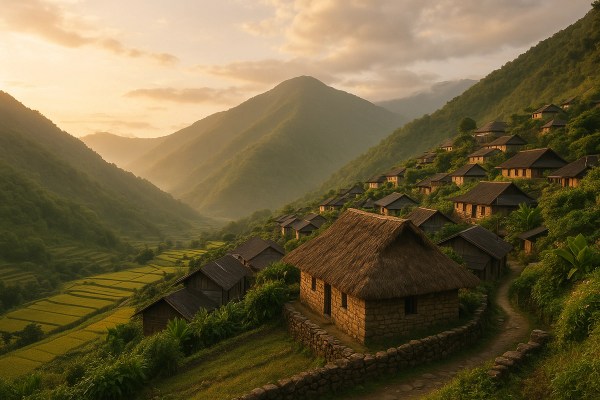Seven Sisters Festival Guide: Hornbill & Ziro Travel + Stay Tips (yep, the 2025 edition vibes without being time-stamped forever)#
I’m going to say it straight. The first time I landed in Dimapur, my phone was on 6% battery, my backpack smelled like damp socks, and I’d booked a homestay in Kohima through a cousin’s friend’s WhatsApp number. It was chaotic, it was beautiful, it was very Northeast. And somehow, between the chilly mornings in Kohima during Hornbill and the misty afternoons in Ziro among those Apatani paddy fields, I figured out a bunch of stuff you won’t always get from slick travel pages. So this guide is me—an Indian traveler—trying to put that mix of emotion and info together. Not perfect. Definitely useful. A tiny bit biased because the pork with bamboo shoot was unreal and I’m still thinking about it.¶
Hornbill & Ziro: Why these two festivals are totally worth your leave days#
If you’ve never done the Seven Sisters for festivals, start here. Hornbill in Nagaland is this massive cultural showcase that usually happens in the first half of December at Kisama Heritage Village near Kohima. Think tribal morungs, war-memorial style monuments, bright shawls, log drums, dance, food stalls that make your nose happy from like 50 meters away, and a night carnival in Kohima town where everyone just… pours out. Ziro Music Festival in Arunachal? Different vibe. Late September mostly, long afternoons that melt into golden hour, indie bands, bamboo stages, impossible starry skies, and swaying people in gumboots because the ground gets squishy. It’s got a strong eco heart—minimal plastic, refill points, compost loos—and honestly I didn’t expect to feel so calm at a music fest.¶
Permits and entry stuff (don’t skip this, trust me)!#
Inner Line Permits are a thing. For Indians, ILP is required for Nagaland and Arunachal Pradesh. You can usually apply online now, which saves a ton of time and awkward counter queues. Keep a soft copy and printout both—network can be moody. It’s not too expensive (generally around ₹100–₹200 per person per entry period, varies a bit), and you’ll need ID proofs. Foreign travelers need Protected Area Permits in parts of Arunachal and Nagaland—get it done through a recognized operator or check the latest instructions before you travel. There’s also ILP in Manipur since a few years back, if you’re thinking of extending your trip. Point is: don’t show up hoping for “jugad.” Officials are polite but rules are rules.¶
Getting to Hornbill (Kohima / Kisama) without losing your cool#
Most folks fly to Dimapur airport (closest major one), then road it to Kohima. Shared taxis and sumos run all day. Per seat rates hover around ₹350–₹600 depending on demand and time, and a private cab can set you back ₹2,500–₹3,500 for the 2–3 hour ride. Roads are hilly, so maybe carry motion-sickness tabs if that’s a thing for you. Kohima itself is at about 1,400–1,500 m, so nights get cold in December—pack a proper jacket. Kisama Heritage Village (festival grounds) is like 12 km from Kohima. Autos and shared cabs go frequently during the fest, though evenings can be jammy traffic wise. Entry fee at Kisama is modest (usually in the ₹50–₹100 bracket), but special events can have separate tickets. Check the official Hornbill socials closer to your dates for the latest.¶
Random story: my first Hornbill ride was in a beaten-up Sumo with a driver named Aozeno who played soft rock on FM and kept telling me, “Brother, just eat the stewed pork and you won’t feel the cold.” He was right. Also there’s a point where the fog rolls across the road and trees look like silhouettes—pretty magical, if you’re into that moody hill vibe.¶
Getting to Ziro (Arunachal) with the least drama#
The neat thing now is the Donyi Polo Airport at Hollongi (near Itanagar) which has improved connections, especially from Guwahati and Kolkata. You can also do train to Naharlagun and drive up. From Itanagar/Naharlagun to Ziro is about 4–5 hours, give or take road conditions. Shared cabs (sumo style) are cheaper—₹500–₹800 per seat—and private taxis hover around ₹4,000–₹6,000 depending on how hard you bargain and what time you’re starting. Pro tip: start early morning because the light is gorgeous, and if there’s drizzle, the valley looks like a watercolor painting. Just remember ILP for Arunachal, carry copies. People at checkpoints are generally chill if paperwork is clean.¶
Where to stay: homestays, camps, lodges… with rough price ranges#
Kohima options span from old-school hotels to newer homestays and hostels. Budget rooms can be ₹1,500–₹2,500 per night, mid-range ₹2,500–₹6,000, and nicer boutique stays even more if you want the views and fancy bathrooms. During Hornbill, rooms get booked out early, so don’t be that person refreshing last-minute. At Kisama, camps pop up and can be ₹800–₹2,000 per person per night depending on facilities. In Ziro, the most fun is camping packages near the festival grounds—₹1,500–₹3,000 per person per night including tents, sleeping mats, and sometimes breakfast. Homestays in Apatani villages (Hong, Hari, Bamin Mikyo etc.) feel intimate—₹2,000–₹4,500 a night commonly. Locals are warm, tea is endless, and you might get rice beer if you don’t act like a jerk.¶
I stayed with an aunty near Jikhe-elley (I probably spelled that weird) in Kohima who served me black tea at 6 am and insisted I eat sticky rice before stepping out because “you Delhi people get hungry too quick.” The room had simple wooden walls, a thick quilt, and a balcony where the whole valley felt like it was inhaling and exhaling. In Ziro, my campsite was run by kids who were clearly in their late 20s, but felt 19 in a nice way—flashlights, snack stash, music until quiet hours. Basic loos, yes, but clean. Bring a headlamp and wet wipes. Always.¶
Food: Naga and Apatani plates that just don’t quit#
Nagaland food is a trip—smoked pork with bamboo shoot, axone (fermented soybean) that hits like a flavor bomb, dried fish, sticky rice, fiery chutneys. Zutho (traditional rice beer) is iconic, but remember Nagaland has prohibition by law even though cultural drinks exist, so be respectful. You’ll also find safer choices like momos, chow, thukpa, and even bakery stuff in Kohima. In Ziro, local apong (rice beer), meat stews, leafy veggie plates, and fish from the famous tarin fish farms—very home-cooked vibes. Vegetarian travelers won’t starve, promise, but the menus are meat forward. Spice levels vary, so don’t be shy to ask for milder versions if your stomach is not a warrior.¶
- Smoked pork with bamboo shoot (Nagaland) – rich, robust, kinda addictive
- Axone pork or chicken – funky in the best possible way
- Apong / rice beer (Arunachal) – smooth, light, communal
- Sticky rice with simple greens – perfect base to handle the heat
- Local chilli pastes – careful, they’re small but mighty
On-ground vibes at Hornbill: what actually happens#
Kisama Heritage Village is basically an open-air museum turned festival. Each Naga tribe has a morung (traditional house) space where you see wood carvings, horns, baskets, and sometimes community cooking. Cultural performances roll through the day—dances, mock warrior shows, stick games, log drum beats. Craft stalls sell shawls, baskets, beadwork. Late afternoon shadows are an absolute mood for photos. Back in Kohima town, the night carnival sets up with food, music, and local bands. There’s often rock contests and concerts during the week—go if you’re into headbanging and scarf-swinging. The crowd is mixed—families, students, travelers—super friendly. Just keep your bag close because packed lanes are packed lanes.¶
Side trip alert: Dzükou Valley. If you’ve got a spare day, trek up from Viswema or Jakhama and watch a valley that looks like someone airbrushed it green. Return same day or spend a night if prepared—carry warm stuff because the wind is rude. Japfu Peak is another one—higher, tougher, more bragging rights. Khonoma, the green village, is beautiful for half a day with stories of conservation and warrior history. Honestly, even a chai by the road near the War Cemetery gives you these quiet moments that stay with you.¶
Ziro Music Festival: bands, bamboo and biodegradable goodness#
Ziro has this low-waste philosophy that’s not just lip service. Bring your own bottle and cup. Most stalls will encourage refills, and the festival is strict about single-use plastic. Compost toilets are part of the setup—less glam, more planet. Music starts afternoon-ish and goes till night. From indie folk to experimental rock, the lineup gives you a bit of everything, and it’s mainly Indian bands with some guests. Between sets, stroll to viewpoints like Ziro Putu, or visit Apatani villages—bamboo houses, neat lanes, folks tending fields. Do not photograph people close-up without asking, it’s rude, and you’ll be corrected very quickly. Post rain, the ground gets sticky—gumboots or waterproof shoes are not a gimmick here.¶
- Carry a light rain jacket, headlamp, and a reusable cup—non-negotiable
- Gumboots for the win. Sneakers get unreasonably muddy
- Book passes early—prices go up closer to dates and day passes sell out fast
- Cash + UPI both. Network can choke so don’t rely only on QR codes
- Respect quiet hours back at camps—sound carries in the valley
Costs, budgets and the stuff that burns holes in wallets#
For Hornbill, if you do 4–5 days, a decent budget (flights not included) lands around ₹15,000–₹30,000 depending how you roll: shared taxis, homestays, simple meals vs boutique rooms and more cab rides. Ziro for the 4-day festival plus extra days will feel slightly higher because camping packages plus transport from Itanagar can add up—say ₹20,000–₹35,000 excluding flights. Festival passes? Ziro’s full-fest passes typically span roughly ₹3,500–₹8,000 depending on early bird vs late-phase pricing. Day passes vary too. Hornbill’s entry at Kisama is cheap, with paid add-ons depending on events. Merch and snacks? Very tempting. Don’t forget ILP fees, and set aside emergency cash for last-minute rides because after rain, you may not fancy walking 2 km in slush.¶
Safety, connectivity, and latest travel updates (no sugarcoating)#
Overall, both Kohima and Ziro feel safe. People help you, genuinely. But be smart: avoid walking long stretches alone late night, especially on empty roads. Road conditions change fast—post-monsoon landslides or washouts happen in parts of the Northeast every year, so keep buffer days. Check official festival pages and state tourism handles for current advisories—things like political bandhs, route diversions, or weather warnings pop up. Connectivity has improved a lot—Jio and Airtel 4G are common—but during festival peak hours networks get clogged. Save offline maps, carry printed booking confirmations. UPI is everywhere now (even tiny stalls flash QR codes), although you should carry some cash for backups. Oh, and altitude-ish weather—layer up, and maybe pack ORS if you get dehydrated dancing too much.¶
Lesser-known spots and side quests around both festivals#
Around Kohima, apart from Dzüko, Khonoma and Japfu, drive to Kigwema for village ambiance or grab hillside cafes on the way to Kisama with valley views. There are eco-trails led by local guides which are 10x better than wandering blindly. In Ziro, I loved strolling through Hong village lanes and sitting by Tarin Fish Farm, watching kids chuck pebbles. If you can plan a day, head to Pange in Talle Valley Wildlife Sanctuary—bird calls, forest smells, footbridge fun. Some homestays offer guided walks explaining Apatani agriculture and fish-rice systems. That stuff made me feel like okay, this is not just a “go-there, dance, leave” trip—it’s a real place with real stories.¶
Booking strategy that actually works (from repeated trial and error)#
Do permits first, no excuses. Then lock stay. For Hornbill, Kohima rooms get scooped by mid-season, so book at least a month ahead. Camps at Kisama need coordination—use legit operators or local hosts. In Ziro, festival passes have early bird windows—buy those if possible. Camps usually offer package deals—ask for what’s included: mats, blankets, breakfast, shuttle timings. Keep all confirmations offline. Oh and keep your government ID handy at checkposts and festival gates. I’ve seen folks pulled aside for “I forgot yaar.” Don’t be those folks. And yes, travel insurance. I know we all ignore it, but hills + rain + plans can get messy quick.¶
Eco ethics, local respect and the small things that matter#
No littering—carry your trash till you find proper bins. Don’t pluck flowers at Dzükou or carve your name on bamboo at Ziro. Ask before photographing people, especially elders in traditional wear. Dress comfortably but mindfully—some spaces are cultural, not Instagram backdrops. Nagaland’s liquor prohibition means no public drinking dramas, even if you’re offered traditional brew in private—keep things chilled. Same for music volume back at camps. Support local—buy crafts directly from artisans, eat at small stalls, tip if there’s a tip jar. Honestly these tiny things protect the vibe we all fell for.¶
I came for the festivals, stayed for the people. And the chilli pastes. And those foggy hills that make you wanna be quiet for a minute.
A simple itinerary that won’t exhaust your soul#
You can do these festivals in separate trips because dates don’t align—Ziro in late September, Hornbill in early December. For Hornbill: Day 1 Dimapur to Kohima, evening stroll; Day 2–3 Kisama cultural shows and night carnival; Day 4 Dzükou trek; Day 5 Khonoma and slow cafe day, head back. For Ziro: Day 1 Itanagar to Ziro, camp check-in; Day 2–4 festival plus village walks; Day 5 Pange forest and Putu viewpoint; Day 6 back down. Leave buffers in case roads misbehave. It sounds basic but it’s balanced—one eye on the music and dance, one eye on the hills and stories.¶
Current trends I noticed on ground (the good and the annoying)#
- More UPI, less cash. Great when network works. Meh when it doesn’t. So carry both.
- E-ILP is the new normal—saves time. But at some checkpoints, they still like paper printouts.
- Sustainability isn’t just a buzzword at Ziro. People will call you out for trash. In a nice way. Mostly.
- Hornbill keeps expanding experiences—night carnival felt bigger, and local entrepreneurs had seriously cool food setups. Also more curated crafts, not just generic souvenirs.
- Accommodation costs inching up. Not crazy, but book early—it genuinely helps.
- Shared taxis fill fast during festival hours. Be at stands 20–30 mins before peak movement times if you don’t wanna elbow your way in.¶
What to pack so you don’t cry later#
Warm jacket, thermals for Kohima nights. Rain jacket for Ziro. Headlamp. Power bank (big one). Solid shoes + gumboots for Ziro. Reusable bottle and cup. Quick-dry towel. Earplugs if you’re a light sleeper at camps. ORS, basic meds. Copy of ILP and IDs. Offline maps. Small cash stash. And yeah, snacks—peanuts, chikki, protein bars—festival food is amazing but queues can be long, and your stomach might, you know, do tantrums.¶
Little cultural notes that make everything smoother#
Greet people. Smile, don’t shove cameras. If someone corrects you, accept it graciously. Learn basic phrases—hello and thank you in local contexts make folks light up. Be on time if you’ve booked a local guide; they take pride in their craft. Dress for weather more than fashion. Don’t bargain like a bully with artisans—if a handwoven shawl feels pricey, remember it took days. Eat, listen, ask questions. The Northeast has layered histories—tribal identities, colonial stories, modern student energy—and festivals are one window into that. It’s not just your holiday.¶
I’m not gonna oversay the year, but yeah, I did one round through these festivals in 2025 and honestly the changes were clear—better connectivity, smarter eco rules, more organized ticketing. Still imperfect in a human way. Which is nice. We don’t need everything to be sanitized.¶
Final thoughts and a chai invite#
If you’re on the fence, pick one this year and the other next season. Or do both if your boss is chill about leave. You won’t regret it. Hornbill feels like a memory that thumps in your chest, Ziro like a song that sits in your bones. Pack light, plan permits, book early, and keep a flexible heart for when plans do their own thing in the hills. Also, teensy request: support local hosts. They make these trips actually work. If you want more long-form guides like this, with real talk plus practical stuff, I keep reading and sharing on AllBlogs.in—useful for planning and for dreaming on slow afternoons.¶

